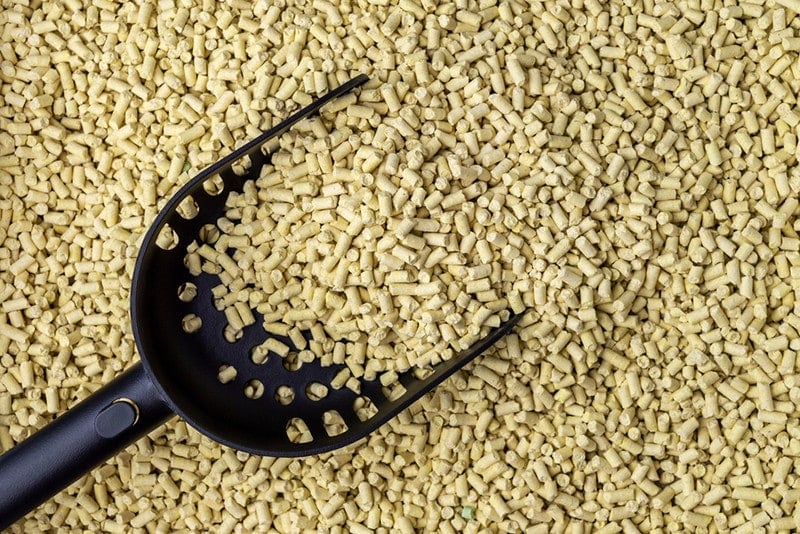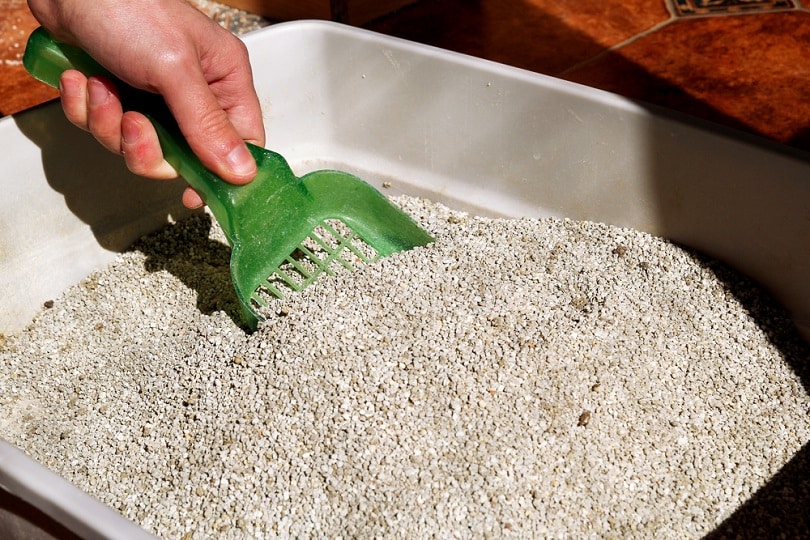[ad_1]
Ask any cat owner what the least fun part of living with their pet is, and most will probably say dealing with the litter box. Spilled litter always seems to land outside the box, but is it safe to vacuum it up? In certain circumstances, it’s okay to vacuum cat litter, but you risk clogging the machine without proper precautions.
In this article, we’ll tell you how and when it’s safe to vacuum cat litter, plus some tips on keeping your litter box clean and why it’s so important.

Top 3 Tips on How to Vacuum Cat Litter Safely
1. Vacuum Dry Litter Only
The most crucial tip for vacuuming cat litter safely is to clean up only dry, unsoiled litter. Wet, soiled litter is most likely to clog the filter and hoses of your vacuum cleaner. If you have a canister vacuum, the wet litter will stick to the sides and be tricky to empty. Don’t try to suck up clumps even if they look dry.

2. Choose the Right Vacuum
Many vacuum brands offer a special pet model designed to clean up hair, litter, and animal messes more effectively. They are easier to clean and contain special attachments to make vacuuming litter quicker. Anti-allergy vacuums often contain special seals or filters that can keep cat litter dust better contained, too.
Handheld or wet-dry vacuums are also good choices for cleaning up cat litter. Wet-dry or shop vacuums are designed to clean up more intense messes than a household machine. They should be able to handle even wet litter.
3. Consider the Type of Litter You Use
Clay and silica cat litter are generally the easiest and safest to clean up with a vacuum. Other types of litter, such as pine, wheat, or walnut, have larger particles that are more likely to cause problems with your vacuum. It’s safer to sweep up these types of litter.


Can You Reduce the Amount of Spilled Litter?
Here are a few steps you can take to limit the amount of spilled litter you’ll need to vacuum up.
First, choose a low-tracking litter. Despite your cat’s best efforts to track them around the house, they are designed to stay in the box. Low-tracking litters are available in many materials.
Covered or high-side litter boxes are more effective at keeping litter contained, especially for cats who are aggressive diggers and throw litter everywhere. You can also place litter mats around the box to catch any litter that escapes.
Keeping Your Litter Box Clean
Keeping your litter box clean is an essential step to prevent your cat from avoiding the box and peeing or pooping in inappropriate locations. Scoop the box at least once a day, twice if possible. Change the litter completely as recommended by the manufacturer.
When you change the litter, thoroughly clean the empty litter box with soap and water. Dry the box completely before adding new litter.
Along with sweeping or vacuuming spilled litter each day, help minimize odors by wiping the outside of the litter box. You can also use a pet odor-neutralizing spray or cleaner on the box or floors.


Conclusion
Depending on the type of cat litter you use, it may be safe to vacuum with the right attachments. Remember, it’s never safe to vacuum wet litter unless you use a shop or wet-dry vacuum. You can reduce the amount of spilled litter by following our easy tips to help protect your vacuum even further.
Featured Image Credit: Pixel-Shot, Shutterstock
[ad_2]
Source link